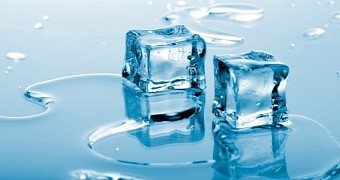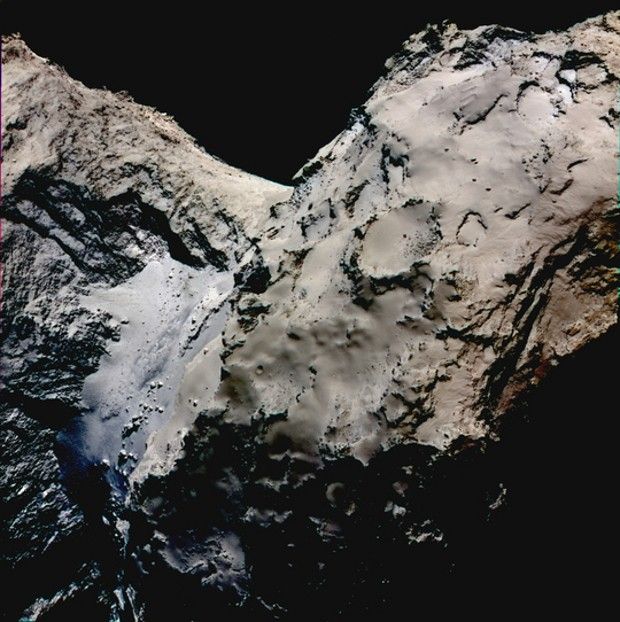In early August 2014, the European Space Agency's Rosetta probe reached Comet 67P/Churyumov-Gerasimenko, then 405 million kilometers (over 251 million miles) away from our planet, and was caught by its gravitational pull.
The spacecraft has been orbiting the comet ever since, documenting its makeup and snapping images of its surface. Recent data beamed back to Earth indicates that Comet 67P/Churyumov-Gerasimenko has a considerable amount of water included in its anatomy.
Thus, mission scientists say that at least one massive block of frozen water appears to be resting on the neck connecting the celestial body's two lobes. The area accommodating for this potential block of ice is known as the Hapi region.
Searching for ice on 67P/Churyumov-Gerasimenko
These days, Comet 67P/Churyumov-Gerasimenko and the European Space Agency's Rosetta probe find themselves at a distance of well over 455 million kilometers (283 million miles) from our planet.
In a report detailing their work, the researchers now saying that there is probably frozen water on this distant celestial body explain that they reached this conclusion after looking at Rosetta images showing the reflectivity of the comet's surface.
Apparently, the Hapi region on Comet 67P/Churyumov-Gerasimenko reflects red light less effectively than other areas. Because of this, it has a bluish color that scientists say hints at the presence of water.
The Hapi region is also more active in the sense that it produces jets of dust and gas surprisingly often. Besides, it is considerably smoother than what is the norm for the comet's overall surface. These other particularities also indicate that it might hold water.
Astronomers say that, if the region does in fact pack ice near the surface, this would explain its odd reflectivity and even the jets of dust and gas documented in the area over the past few months.
“Hapi might be a region that has been able to retain ices on its surface during past orbits around the Sun and has thus enough 'fuel' left to create the fireworks of activity we have witnessed in the past months,” scientist Sonia Fornasier explained in a statement, as cited by Phys Org.
Why finding water on a comet is a pretty big deal
The thing about comets is that they are not just mammoth boulders aimlessly flying around the cosmos. Instead, Comet 67P/Churyumov-Gerasimenko and its buddies are whatever was left from the clouds of ice, dust and gas that formed our Solar System.
In fact, there are some researchers who believe that it was an army of comets that made it possible for life to come into being on our planet by bombarding it and delivering both water and very simple organic molecules to its surface.
What this means is that, the more they know about Comet 67P/Churyumov-Gerasimenko, the better scientists will understand the formation of the Solar System. What's more, the discovery of frozen water on this celestial body sheds new light on the emergence of life on Earth.

 14 DAY TRIAL //
14 DAY TRIAL // 

